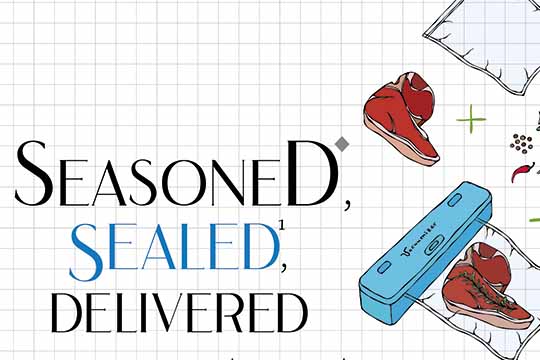
- Lauren McCarthy
- 發布於 Dec.30,2021

舒肥法可能看似是新的當紅烹飪趨勢,但這種料理法其實已經存在一段時間了。
延伸閱讀 >> 「沒吃早餐」不是 didn’t eat breakfast?來看這些台式英文你有沒有中招!
閱讀測驗
Sous-vide might seem like the hot new culinary trend, but this cooking method has actually been around for quite a while. Meaning “under vacuum” in French, sous-vide refers to cooking vacuum-sealed food in a low-temperature water bath for a long time. Sous-vide cooking began in the 1960s as a means of food preservation, and a decade later it found its way into restaurant kitchens.
Today, anyone can give sous-vide cooking a try, thanks to the emergence of low-cost immersion circulators. This device is a heating element that warms and circulates water over an extended period of time. Lightweight units for home cooks can be clipped on the side of a large pot or plastic container, and many are now connected to apps that provide users with tips and helpful suggestions. Most people who purchase a sous-vide device also buy a vacuum sealer, though glass containers (tightly packed) or plastic sandwich bags (with the air pressed out) can be used as well. The airless packaging not only allows the food inside to heat up to the temperature of the water, but it also keeps in juices and flavors that are lost with other cooking methods.
While sous-vide cooking can ensure precisely and perfectly prepared foods, especially proteins, chefs do need to keep food safety in mind. As cooking temperatures drop, the amount of time meat must stay at that temperature in order to be safe to eat rises. Additionally, food that is kept in oxygen-less containers can produce a toxin that leads to botulism poisoning. In general, heating food to 55°C is enough to pasteurize it, at which* point it is safe to be stored for later use.
延伸閱讀 >> 睡飽飽才厲害:獅子的生存智慧Lions Sleep a Lot—and That’s Their Genius
單字片語整理
Words in Use
Practical Phrases
It isn't easy to master this game, but give it a try.
這個遊戲不容易上手,不過試試看吧。
I keep in mind my grandfather's advice whenever I have a problem.
我遇到問題的時候,總是謹記我爺爺的忠告。






